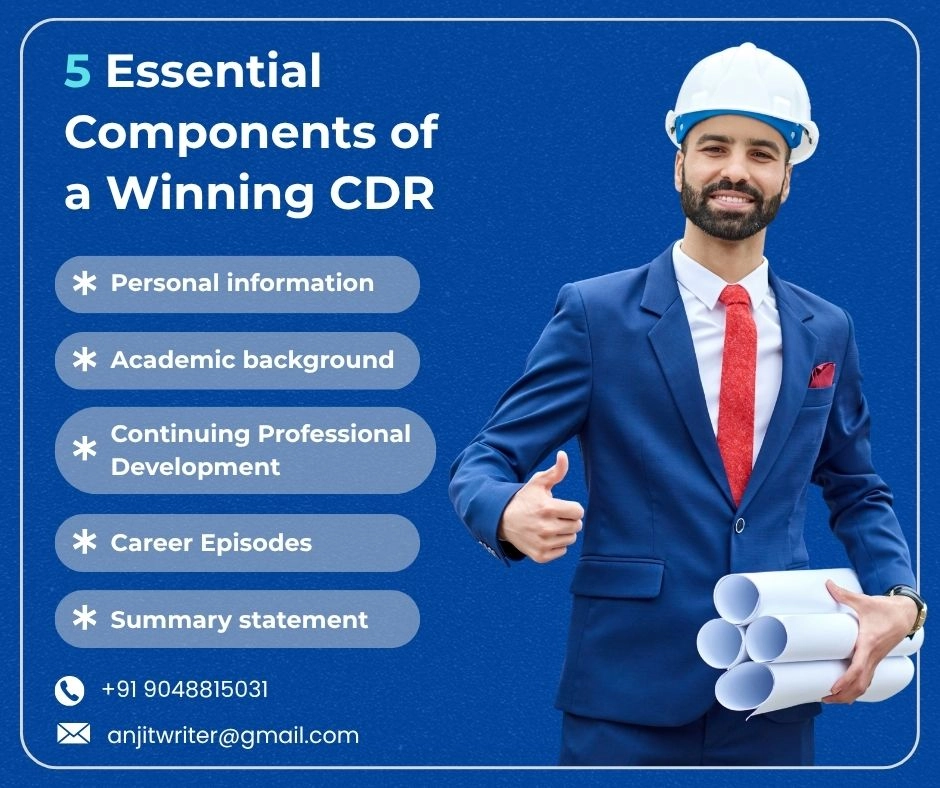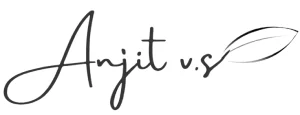Do you plan to submit a CDR for Australian skilled migration in 2025? Are you unsure how to structure the document or what information to supply through it? Well, we are excited to share all the insights you were looking for about CDR writing in detail in this blog. So, get ready to discover!
What is a CDR? What Role Does a CDR Play in One’s Australian Migration?
CDR is the abbreviation of Competency Demonstration Report. It is a document that Engineering candidates from foreign countries need to produce before the Australian Migration Authority while migrating to Australia on a work visa under the Engineering job category.
Just like a healthcare professional must go through the AMC criteria to go to Australia on a work visa, foreign-born and educated Engineers must clear the EA (Engineers Australia) criteria. A CDR is the primary document which helps EA to assess a candidate’s competency as an engineer.
What Are The Key Sections/Components in a CDR?
As you investigate further on how to write a CDR, it will become evident that there are multiple sections or components that this document needs to cover. Let’s try to uncover what each component represents.

Personal information:
Start your CDR writing by providing a clear and concise personal information. This section should have your passport size photograph, passport bio and English language proficiency test result.
Academic background:
Going further, include details about your academic background, such as what course you studied, what was its medium of instruction, recognition details of the institution, etc.
Continuing Professional Development (CPD):
Not only should you show that you have relevant qualifications, but also that you are actively upskilling yourself. The section named CPD is just for that. Here you can write about all the short-term courses, workshops, seminars or other skill development activities you have enrolled on lately.
Career Episodes:
This is, in a way, the most important area in a CDR report. How to write career episodes for Engineers Australia? The best approach is to present it in a narrative way. There must be three different episodes. One about an academic project, the second about a work experience and the third about a critical engineering challenge you were able to handle.
Summary statement:
When they research how to write CDR for Engineers Australia, one area that most students ignore is the summary statement. It is nothing but a cross-referencing map to show that your career episodes are indeed falling into the right competency elements as per the selected ANZSCO.
How to Make CDR for Engineers Australia?
Now that you know what elements your CDR report must consist of, let’s see how to write CDR effectively. The most important thing to ensure is that you know what the EA’s expectations. Just like the completeness of the information, the standards expected for your document by Engineers Australia need to be achieved without failure. Let’s see how to approach the writing of each CDR component below.
How to Write Career Episodes for Engineers Australia?
In your Competency Demonstration Report (CDR), career episode writing plays a very important role. You need to provide three detailed career episodes, each describing how you applied your engineering knowledge in real scenarios. Begin each episode with the title of the activity, including the relevant dates, location, and employer or institution.
Ensure that the episodes reflect different experiences. Do not repeat the same project. For example, one episode may focus on an academic project, another on a job-related task, and a third on solving a specific engineering challenge. If it’s an academic project, include your supervisor’s name, email, subject name, and code. Use clear, Standard English, write in the first person, and adopt a narrative style to reflect your communication ability.
How to Write Summary Statement for Engineers Australia?
CDR preparation engineers Australia includes a section titled summary statement, where you are supposed to provide a brief mapping of your competencies from career episodes to the corresponding elements of your nominated engineering occupation category in Australia. For instance, a Professional Engineer, Engineering Manager, Engineering Associate or Engineering Technologist.
Our professional CDR writers recommend that you understand the competency requirements for your occupation category before starting to write your CDR, as it gives you a better picture of what you need to demonstrate in your report. If your job role demands multiple competencies, you may touch each, even if it is just a few words, to reaffirm that you have full coverage of the required elements.
How to Write a CPD?
Another important component in the CDR writing is CPD, or Continuing Professional Development. More than a section to list the certifications or post-graduate academic activities you invested in, it is a space to show that you are actively seeking opportunities to upskill yourself and thereby stay competent in your profession. In Australia, where engineering standards are constantly evolving, it is very important to showcase your proactive efforts to upskill yourself. Some efforts that qualify to be listed in CPD are relevant workshops, seminars, short courses, technical training, and informal learning. Use a structured table format to list these activities with their dates, time spent, and additional contextual details.
What Makes A CDR Approval-Ready?
Just because you wrote a CDR with so much effort and included all the information, doesn’t necessarily make it effective. For it to be successful, it must tick all the boxes that Engineers Australia (EA) is looking for. So, let’s break down the qualities of an approval-ready CDR.
- While narrating your career episodes, stick to your personal engineering role rather than your company’s background or any other irrelevant info.
- Go through the EA (Engineers Australia) guidelines carefully before starting to write your CDR. EA precisely tells that the CDR must be exclusively about yourself. Live that in every word.
- Write your career episodes in active voice. Mandatorily use first-person narration, for instance, “I achieved, I managed”
- Select your career episodes wisely so that they correspond to your targeted engineering occupation category.
- Prove that you have good communication skills and that you will be competent in your role by using precise and correct Australian English.
- Prove that all accomplishments you mention in your CDR are true by substantiating them with valid documentation and measurable outcomes.
- See to it that each of your career episode paragraphs has a corresponding competency indicator and that it is mapped to the summary statement.
CDR Writing with AI Tools: Smart Move or Risky?
In recent times, with the coming of AI tools like ChatGPT and Gemini, several applicants are relying on these tools for their CDR report writing. While it is true that AI tools can bring so much ease to the writing, for a serious and personalised academic document like a CDR, it falls short. CDR requires deeply individual and technical input. The generic AI outputs can’t help. Without a doubt, we can say relying on AI tools instead of human efforts is a risky choice.
How to Use the ‘3W Formula’ to Make Your Career Episodes Stand Out?
If you manage to impress your EA evaluator with your career episodes, then your chances of getting the approval are far higher. So, when you learn how to write CDR, don’t skip understanding how the 3W formula helps you shape each episode with purpose, flow, and relevance.
W1: What was the context? | Here, explain your academic and professional background, projects you headed and problems you contributed to solving. |
W2: What did you do? | This is where you can explain how your role evolved, the actions you took, and how you applied your engineering skills. |
W3: What was the outcome? | Clearly substantiate the outcomes resulting from your involvement in the projects. You may also highlight the achievements and how your input made a difference. |
CDR Rejections: Real Mistakes That Cost Approval (And How You Can Avoid Them)
| Issue | Description | Example |
|---|---|---|
| Not specifying individual contribution | Not specifying your individual role but instead writing about the team generally can make your CDR, especially the career episodes, look weak. Engineers Australia wants to know what you did, not the team. | Excerpt: We first developed the layout for the circuit and then followed with proper testing. |
| Unclear Project Description | If the project context is not clear, evaluators wouldn’t know what you were working on or why it mattered. | Excerpt: I worked on an automation system in a factory to improve efficiency. (What system? What factory? What was automated?) |
| Lack of illustration for the problem-solving flow | If the career episodes only list the projects you took control of and do not go into any detail as to how your efforts could actually solve a problem, it can seriously affect the report’s credibility. | Excerpt: I led the development of a new water filtration system during my final year project. |
| Lack of logical sequences | Presenting the career episodes or the tasks within it without a logical sequence will confuse the CDR evaluator. | Excerpt: I attended meetings, prepared reports, and handled client queries while testing continued in the lab. |
| Overuse of Technical Jargon | Heavy use of technical terms without specifying their context may cause the reader to find it confusing, especially if your report is reviewed by a non-specialist. | Excerpt: I solved the problem by implementing an FFT on an embedded DSP. |
| Not Providing Measurable Results | Without any tangible results, your contributions will remain unclear. So, one of the best CDR writing tips is to always quantify the impact of your efforts. | Excerpt: The system performance was improved. (How much? In what way?) |
Pro Tip: CDR Writing with STAR + PEEL Method
The STAR + PEEL method is a proven strategy to structure career episodes in CDR and thereby make it powerful and approval-worthy. The STAR in this stands for Situation, Task, Action and Result. This approach lets you talk about your episode logically. PEEL (Point, Explanation, Example, and Link), on the other hand, helps you strengthen your thoughts and avoid vagueness in the writing. Sticking to this combined STAR + PEEL strategy is the most practical way for non-native writers to stay focused and bring logic to their CDR writing.
Why Engineering Graduates Choose Our CDR Writing Help?
One of the top reasons why only a few qualified engineering graduates manage to secure a positive CDR assessment is that they fail to present their technical experience in line with Engineers Australia’s strict guidelines. This happens due to the following reasons/challenges:
- Lack of knowledge of the standard EA format
- Ignorance of competency elements to highlight in career episodes
- Weak selection of the project and its unclear illustration
- Too many errors in the presentation (language and grammar issues)
- Failing to correspond tasks with their respective outcomes
- Last-minute stress and fear of rejection
- Presence of plagiarised or AI-generated content in the CDR
Seeking the help of our professional CDR writing services is a wise choice. While it is true that it costs you money for the service, it will definitely pay off by saving you time and making you stress-free. If you don’t know how to write CDR report, it will reflect in your report in the form of a lack of accuracy, incorrect format, errors, etc. Our experts see to each of those challenges and frame an approval-worthy report through the proven STAR+PEEL structure. We also ensure that your report is free from plagiarism risks and matches EA’s expectations in every section.
Conclusion
Congratulations! We hope this blog has made you a lot more confident in CDR writing. Drafting a compelling CDR report that meets all Engineers Australia expectations calls for not just writing skills but also strategy, clarity and preparation. The insights shared in this blog will equip you for that. We would love to know how you found this blog. Feel free to write your opinion in the comments.

